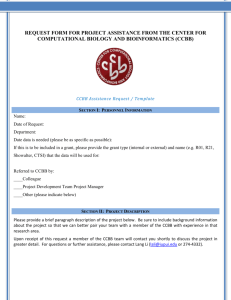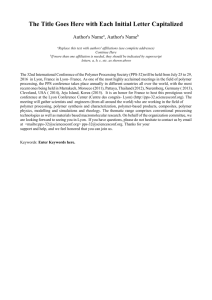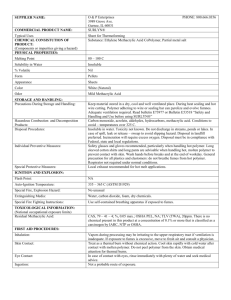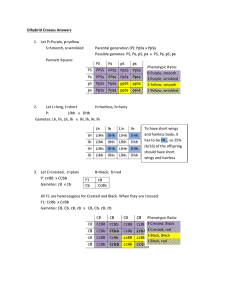CCBB Monte Carlo Method for Full Atom, Branching Polymers
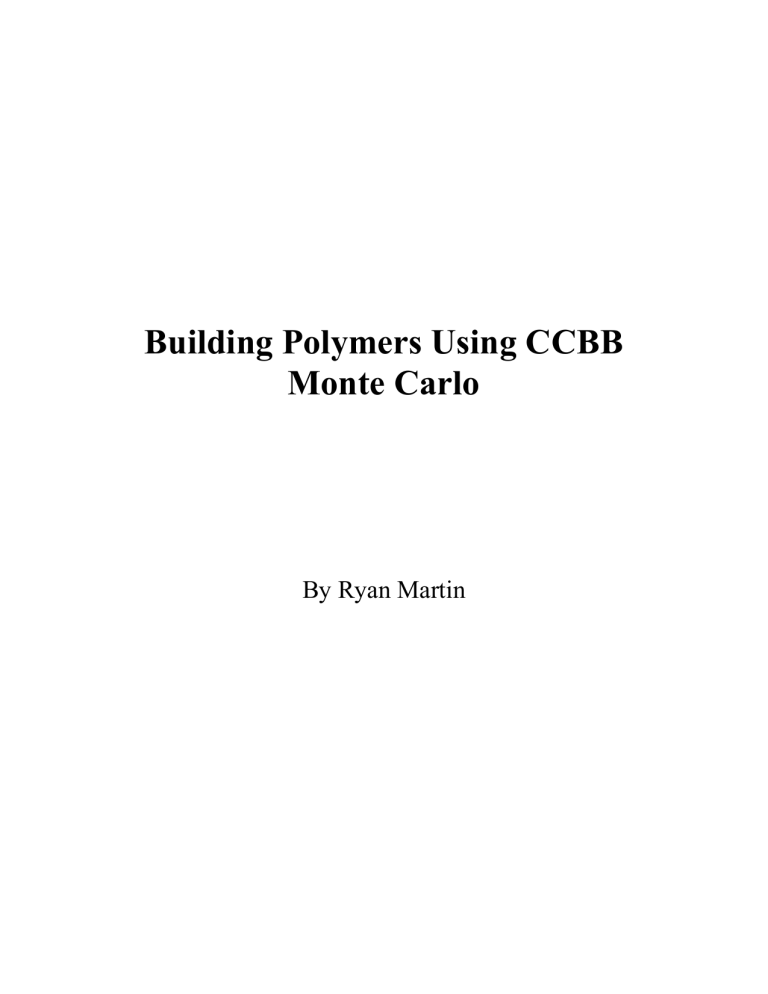
Building Polymers Using CCBB
Monte Carlo
By Ryan Martin
Outline
1.
Explanation of problem
2.
CCBB-DMC Algorithm
3.
Comparison of CCBB with other building methods
4.
Other applications of CCBB
5.
Future extensions to the CCBB method
6.
Summary
7.
Acknowledgements
8.
References
Explanation of Problem
When building polymer systems for long term dynamic simulations it is important to generate a polymer structure as close to the equilibrium structure for the system as possible in order to reduce the simulation time necessary for the system to reach equilibrium and generate the valid simulations we are looking for. Current methods for generating polymer systems, especially dendrimeric or hyper-branched systems, are either time consuming, minimizing each generation before adding the next monomer, or give high energy overlaps that require large equilibration times.
The continuous configurational Boltzmann biased direct Monte Carlo(CCBB-DMC) method generates an ensemble of relatively low energy structures without high energy overlaps through a series of randomly chosen torsion angles weighted by the torsion energy function and the local Van der Waals environment of the torsional clusters. From this ensemble can be chosen a series of polymer structures to be used as starting points for long term dynamics simulations, thus reducing the time necessary for the system to equilibrate and return valid results.
Continuous Configurational Boltzmann
Biased Direct Monte Carlo(CCBB-DMC)
Algorithm
Uses a torsion angle probability density function created from the torsion + Van der Waals energy for each angle step.
Employs a cutoff radius for VDW calculations to increase speed.
Look ahead function ensures lower energy chains.
Generates low energy conformational ensemble of polymer structures.
Energy Terms
Torsional Energy Term:
E
IJKL
1
2
V
JK
1
d { j } cos
n
JK
Van der Waals Energy Term:
E
LJ
D
0
[
12
2
6
]
Partition Function:
Z
N
i
N
4
2
0 e
H
d
i
Torsion angle definition
R c
Cutoff Radius
Look ahead function
Outline of Algorithm Steps
1.
Add i-th cluster
2.
Rotate around i-th bond for g steps
3.
Calculate Hamiltonian (Torsion + Van der Waals) at each step
4.
Generate probability distribution function, P(
), from energy calculations
5.
Randomly select torsion angle for
i
using P(
)
6.
Repeat 1-5 until polymer chain is built
Comparison of CCBB to Other Methods
Typical Polymer Generation
Percec System
Other Applications of CCBB-DMC
Direct calculation of free energy and thermodynamic properties of a polymer system
Partition Function:
Z
N
i
N
4
2
0 e
H
d
i
Thermodynamic Functions:
A=-
lnZ
N
, C p
, S, etc.
Future Extensions to Current CCBB-
MC Implementation
Condensed phase polymer systems with periodic boundary conditions
Polydispersity
Random copolymers
Summary
CCBB-DMC can generate low energy polymer structures near equilibrium
These structures can be used to reduce the simulation time needed for MD calculations to converge
CCBB can also be used to explore the thermodynamic properties of polymer systems
Acknowledgements
Dr. William A. Goddard, III
Guofeng Wang
MSC
Supporting Agencies
ARO-MURI
ARO-ASSERT
ARO-DURIP
NSF NPACI
References
1.
J. Sadanobu, W. A. Goddard III, J. Chem. Phys. 106, 6722
(1997)
2.
S. L. Mayo, B. D. Olafson, W. A. Goddard III, J. Phys. Chem.
94 , 8897 (1990)
Pictures created using POV-Ray freeware raytracer
URL: www.povray.org
